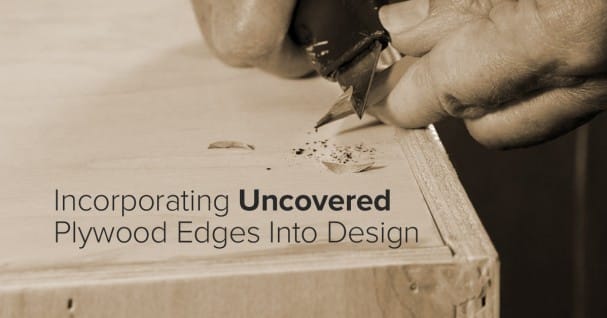Sealing Plywood for longer life. These layers provide dimensional stability, but leave the edges , which expose all of the laminate sections, particularly vulnerable to water damage. The goal is not to sand the filler away but to even it out and fill the open pores of the end-grain plys. Not actually designed for sealing the edges of ply but does a marvellous job. Treating Plywood and sealing edges.
Apply the paint coat starting with the edges. Using the paint brushes, apply an even coat two to three inches wide around the area. The Best Ways to Paint and Seal Plywood.
One of the things marine plywood has in common with other types is that you will always need to sand it down in order to stain, paint, or seal it. Go over both sides of the woo as well as the edges , with 80-grit sandpaper by hand. Building a woodworking project with plywood typically requires that the builder uses a method for covering the exposed edges of the plywood. Is there something else that would be better for sealing this edge to prevent the swelling? I have coats of exterior latex paint.
Thought I would share a quick tip on how to get perfect painted plywood edges. If you have any questions feel free to ask! Edge banding is a band of veneer with heat activated or pressure sensitive adhesive that is applied to the edges of the plywood.
It can be trimmed using a craft knife but a cleaner cut can be achieved by using an edge banding trimmer. Even marine grade plywood will warp and separate over time. As suggested titebond is goo exterior grade caulking, oil base paint if you can get it and marine paint will all protect the end grain for years.
What it does by soaking in unevenly is seal everything to the same porosity, so that the first coat of. Plywood , hardboard and particleboard all tend to absorb moisture through the ends and edges of the panel faster than through the surface. While the panels are still in a stack, seal the ends and edges with a liberal amount of a water-repellent preservative or water-repellent applied with a brush. I felt the were satisfactory. What Michael suggested will work the best short of the above.
How can plywood edges be finished to conceal the plies? The best product to seal plywood edges is CEPS Epoxy (Clear Penetrating Epoxy Sealer). CEPS is the consistency of water, a very thin part epoxy that readily absorbs into the grain of wood and plywood to completely seal the surface. You can also add a rounded corner edge during this process.
Once the surface is thoroughly sanded down, seal all exposed edges with a polyurethane sealer. The exposed plywood edge trend is great for DIY furniture builders. For sealing the edge of the plywood , (the least of your problem now) you could use resin and glass.
Put the resin on just the edge to be sealed and put a strip of glass wider than the thickness of the plywood all the way around the hole. Just as the resin jells cut away the excess glass with a razor blade. How To Finish Plywood Edges Building with plywood is convenient and inexpensive, but the exposed edges typically look unfinished. To clean up the look without covering or hiding every edge , you can just cover them with a strip of self-adhesive veneer edge banding. What would you guys suggest to completely seal wood (probably plywood ) from moisture.
I used to be able to make a sign out of AC plywood that would last longer than any MDO I try today. Make sure you seal the edges really well, might be worth putting a. But exposed edges usually look unfinished unless they’re covered with a layer of wood. While wood veneer tape is one easy way to cover edges , a better method is to glue or nail on a strip of solid wood nosing.
Plywood is a great material for building cabinets, bookcases and shelves. This creates a drip edge so water follows the wall below the floor surface and the water cannot infiltrate into the structure. If your plywood does not extend past the bottom of the floor, you can install aluminum flashing to help carry the water below the floor.
The join is a horizontal plank joining a vertical one inn the middle. I am replacing the plywood floor in my Squib. I go around all my edges with exterior wood putty and seal the edges. Then I paint the edges with a sealer primer and then paint with the appropriate color that I use on the front ot the plywood for the design.
This has worked the best for me on both regular plywood and luan plywood. Plywood edges perform like the end grain of most woods when stained: they absorb more stain than the rest of the surface and get darker. With plywood , the edges usually appear blotchy and.

If the edges are square I second using edge banding tape. They make a paper tape that is the same material as the face of the mdf sheet for this purpose.
No comments:
Post a Comment
Note: Only a member of this blog may post a comment.